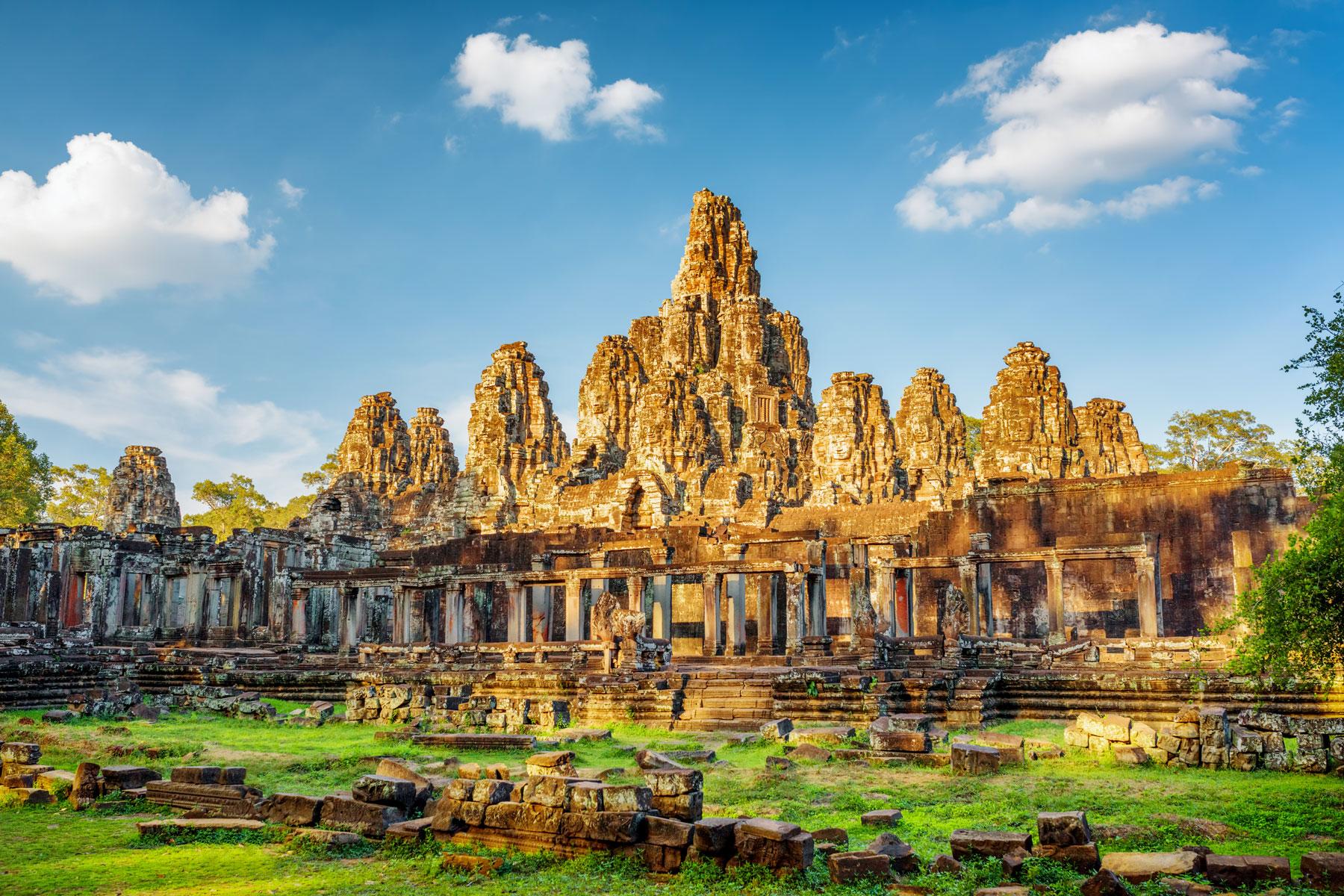From a pre-Angkorian temple in a cave that is being swallowed by stalagmites to a temple in the grip of the jungle, you’ll want to visit these ten temples in Cambodia.
With a rich history tracing back to the 5th century BC, Cambodia offers eons of history, culture, and tradition. Despite the emotional and physical damages done to the country in its recent past, the country is increasingly attracting international guests. Cambodia is experiencing record numbers of visitors, all eager to discover the famous Angkor Wat and Khmer cultures. While Angkor Wat no doubt deserves its acclaim, Cambodia also offers a wealth of other temples to be discovered. Beyond the well-known town of Siem Reap, the cities of Battambang, Sihanoukville, and Kampot, among others, are home to ancient temples and ruins, chock full of history, religious significance, and intrigue.
Due to the age, fragility, and cultural importance of Cambodia’s temples, guests should treat these ruins for what they are: national icons and delicate structures that need to be preserved for future generations. Tread with care and avoid touching ancient statues and stones as much as possible.





